The Best Western Hunting Cartridges: A Technical Guide for Serious Hunters


Justin Hunold
09/29/2025
Western hunting is unlike any other pursuit in North America. The landscapes are vast, the animals tough, and the shot distances often longer than most whitetail hunters ever practice. That means choosing the right western cartridge isn’t a matter of personal whim—it’s a matter of ethics, effectiveness, and confidence.
From long-action classics to cutting-edge PRCs, this guide explores the most proven western calibers for elk, mule deer, and pronghorn, with a technical look at why each one earns its place in a backcountry rifle.
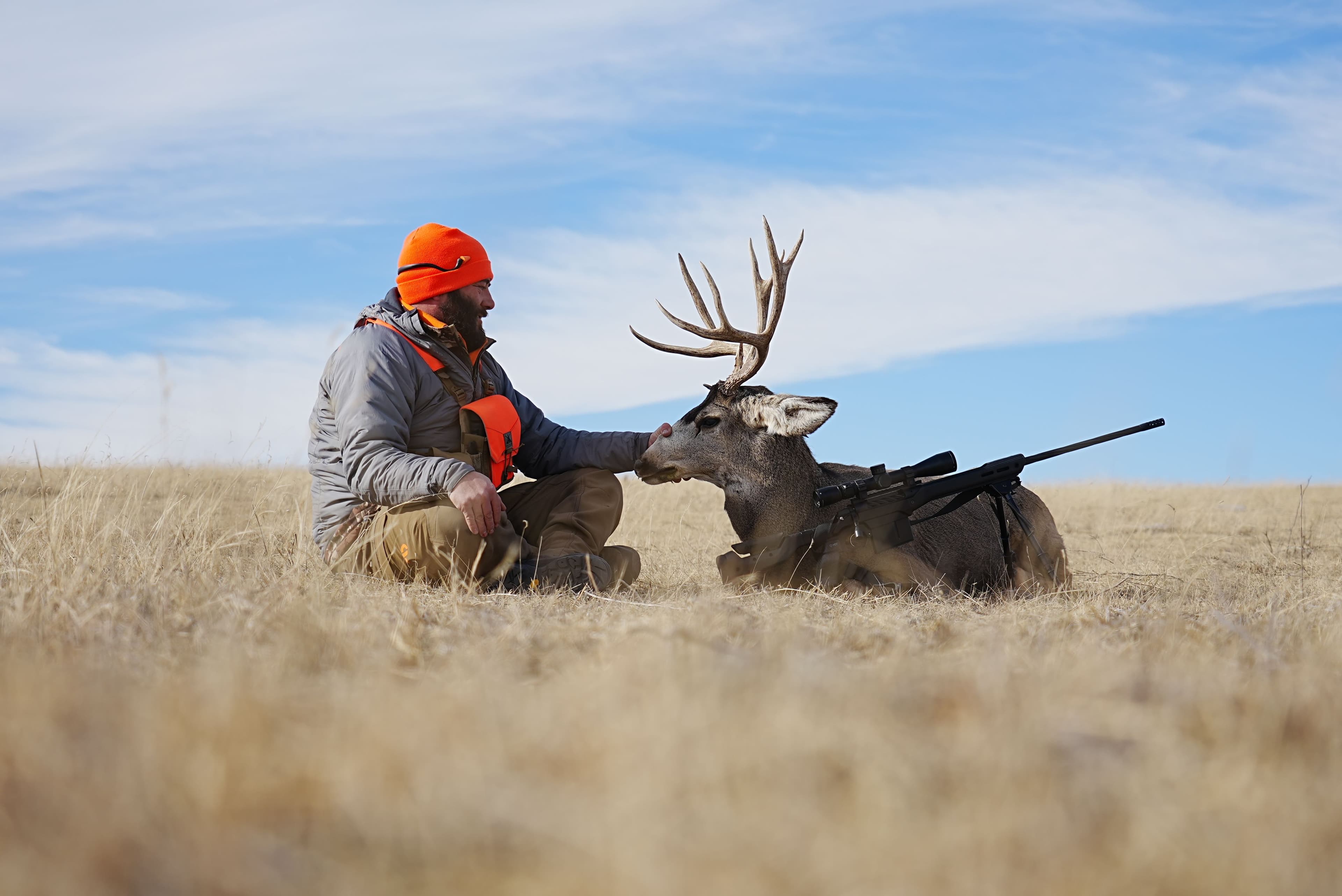
Long Action Classics
These chamberings have been with us for generations, and they continue to put meat on the table in every corner of the Rockies. They’re the cartridges you’ll still find in the scabbards of horse-pack hunters, in the hands of public land DIYers, and in the cherished rifles passed down from grandfathers to grandsons.
.270 Winchester
- Bullet weights: 130–150 grains
- Muzzle velocity: ~3,060 fps (130gr load)
- Effective range: 500+ yards on deer-size game
- Recoil: Mild (~17 ft-lbs in 8 lb rifle)
Few cartridges are as tied to the West as the .270 Winchester. Jack O’Connor made it famous in the pages of Outdoor Life, but it earned its reputation in the field—where mule deer drop across sage basins, and pronghorn fold on the open plains. With a 130-grain bullet, the .270 shoots flatter than most hunters can hold at real-world ranges, and with modern bonded or monolithic bullets, it steps up as a competent elk round inside 400 yards.
The cartridge’s greatest virtue is shootability. Recoil is light enough that nearly anyone can master it, and accuracy tends to be excellent in most rifles. For the hunter who values a fast, flat trajectory and wants to cover the bulk of Western hunting—from pronghorn to elk—without enduring punishing recoil, the .270 remains a timeless western caliber.
.280 Ackley Improved
- Bullet weights: 140–175 grains
- Muzzle velocity: ~3,000 fps (160gr load)
- Effective range: 600 yards+ with high-BC bullets
- Recoil: Moderate (~20 ft-lbs)
The .280 Ackley Improved is a cartridge that hunters once had to beg a gunsmith to chamber. Born as a wildcat, it was the brainchild of P.O. Ackley, who straightened and sharpened the shoulders of the .280 Remington case to maximize efficiency. Today, it’s gone mainstream, and for good reason.
Ballistically, the .280 AI walks in rare company. It pushes a 160-grain bullet to nearly 3,000 feet per second, rivalling the 7mm Remington Magnum but burning less powder and producing less recoil. It thrives with modern, high-BC bullets like the 160- to 168-grain AccuBond Long Range or Berger Hunter, making it superb for open-country mule deer, sheep, and goats where shots may stretch.
In the elk woods, the .280 AI has all the horsepower needed, driving deep-penetrating 160–175 grain controlled-expansion bullets through shoulder and rib with authority. Hunters who want a cartridge that splits the difference between mild classics like the .270 and heavier magnums often find the .280 AI to be the perfect western hunting cartridge.
.30-06 Springfield
- Bullet weights: 150–220 grains
- Muzzle velocity: ~2,900 fps (180gr load)
- Effective range: 500+ yards
- Recoil: Manageable (~21 ft-lbs)
If one cartridge embodies the phrase “do-all western caliber,” it’s the .30-06 Springfield. Born as a military round, it transitioned seamlessly into the hunting world and has anchored game from Coues deer in Arizona to bull moose in Alaska.
What makes the .30-06 endure isn’t flash or speed—it’s versatility. With bullet weights ranging from 150 grains for pronghorn and deer to 200–220 grains for elk and moose, it adapts to nearly any hunt. The 180-grain Partition has long been the standard load for elk, offering deep penetration and reliable expansion.
Recoil is moderate and manageable in most rifles, making it accessible to hunters who may shy away from magnums but still want authority on heavy game. While long-range specialists may scoff at its trajectory compared to newer cartridges, the truth is that most shots in Western hunting happen well inside the distances where the .30-06 shines. For hunters who want one rifle to hunt everything, the .30-06 remains king of practicality.
Short Action Choices
Compact, efficient, and easy to carry, these cartridges shine in lightweight mountain rifles. They may not have the brute horsepower of magnums, but they punch well above their size, especially with modern bullet designs.
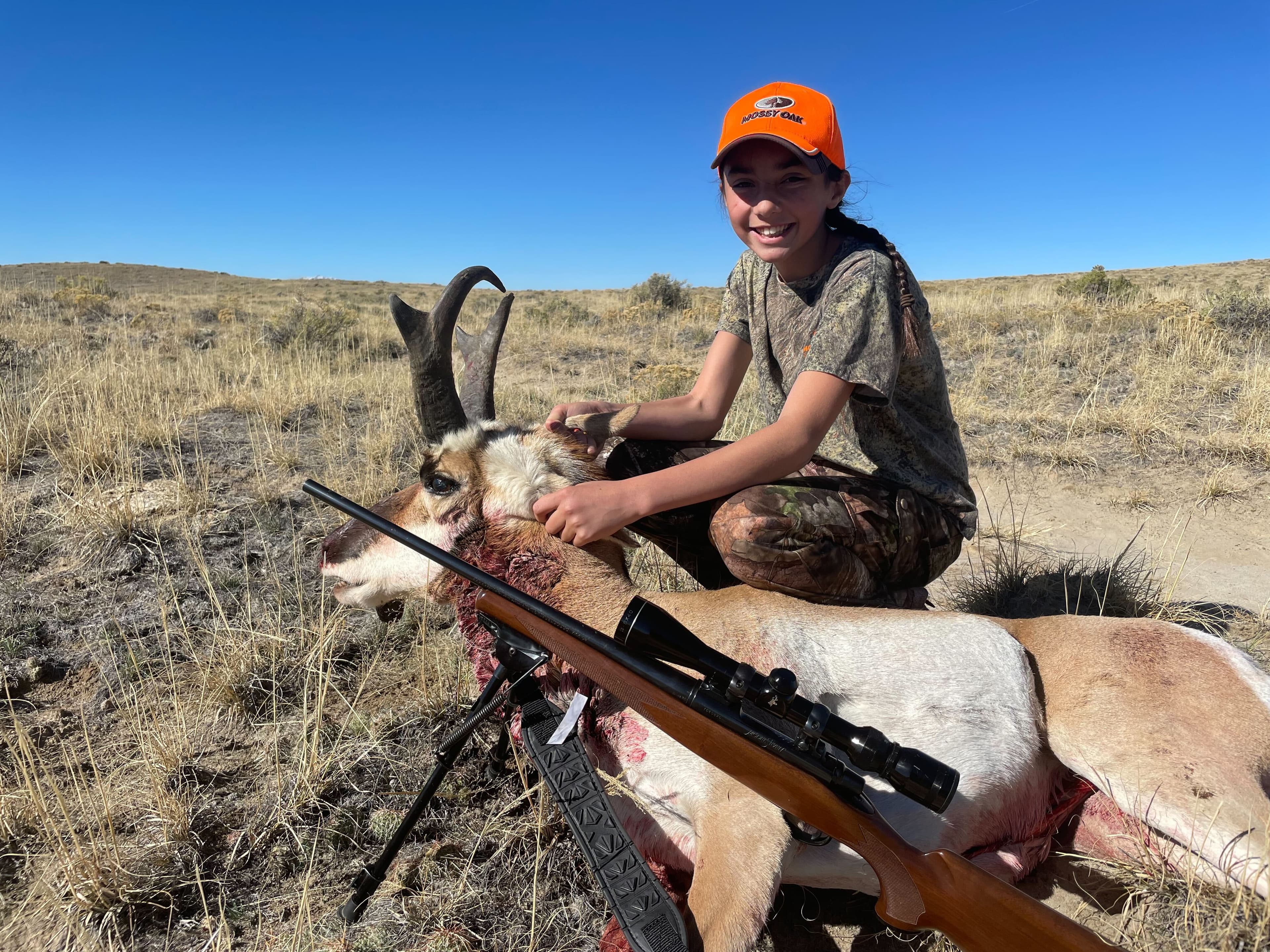
6.5 Creedmoor
- Bullet weights: 120–147 grains
- Muzzle velocity: ~2,710 fps (143gr load)
- Effective range: 500 yards+ on deer, ~400 yards on elk
- Recoil: Very mild (~13 ft-lbs)
Few cartridges have stirred as much debate in western hunting circles as the 6.5 Creedmoor. Detractors call it underpowered; fans call it revolutionary. The truth, as usual, lies in the middle.
What the Creedmoor does brilliantly is shoot high-BC bullets with very little recoil. That translates into consistent accuracy, even for hunters who might flinch behind harder-kicking rounds. On pronghorn and mule deer, it’s a laser beam. On elk, it can be enough—but only with premium bullets (like 143gr ELD-X, 140gr AccuBond, or 127gr Barnes LRX) and disciplined shot placement inside ethical ranges.
It’s not a magnum, and it’s not magic—but for hunters who want to shoot a lot, train often, and carry a mild rifle into the mountains, the Creedmoor is still a capable western caliber.
.308 Winchester
- Bullet weights: 150–180 grains
- Muzzle velocity: ~2,820 fps (150gr load)
- Effective range: 400–500 yards
- Recoil: Mild to moderate (~18 ft-lbs)
The .308 Winchester may lack the long-range sizzle of newer rounds, but it has a century of proof in the field. Its short, efficient case makes it an inherently accurate round, and its availability is unmatched—walk into any small-town hardware store from Montana to New Mexico, and you’ll find .308 on the shelf.
In the West, it’s an honest 400-yard deer and elk cartridge. Beyond that, its arcing trajectory and energy drop-off become limiting. But inside that range, it’s reliable, forgiving, and proven. For hunters who value simplicity and shootability, the .308 remains a practical western hunting cartridge that doesn’t demand magnum recoil.
7mm-08 Remington
- Bullet weights: 140–160 grains
- Muzzle velocity: ~2,800 fps (140gr load)
- Effective range: 500 yards on deer, ~400 yards on elk
- Recoil: Mild (~15 ft-lbs)
Think of the 7mm-08 Remington as the Creedmoor’s big brother. It offers more bullet weight and diameter with similar shootability, making it one of the best “youth-to-adult” cartridges in the West.
It excels on mule deer and pronghorn, where a 140-grain bullet shoots flat and buckles game with authority. Step up to a 160-grain Partition or AccuBond, and the 7mm-08 has all the penetration needed for elk at reasonable ranges. Sheep and goat hunters also appreciate its balance of accuracy, light recoil, and mountain-rifle friendliness.
The 7mm-08 isn’t flashy, but it’s one of the most overlooked western calibers—a true sweet spot for hunters who want capability without punishment.
Classic Magnums
These are the cartridges that built the image of Western big-game hunting in the mid-20th century. Hard-hitting, flat-shooting, and trusted on everything from pronghorn to grizzly, they remain benchmarks of power and versatility.
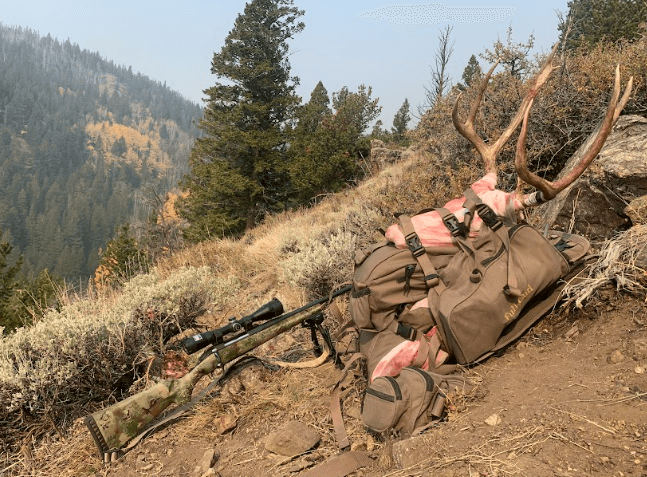
7mm Remington Magnum
- Bullet weights: 150–175 grains
- Muzzle velocity: ~3,000 fps (160gr load)
- Effective range: 700 yards+ with high-BC bullets
- Recoil: Manageable (~22 ft-lbs)
Few cartridges embody the phrase “do-it-all” like the 7mm Rem Mag. Since its introduction in 1962, it’s become a Western icon for its perfect blend of trajectory, energy, and recoil.
The 7mm Rem Mag shines with bullets in the 160–175 grain range, where high ballistic coefficients allow them to buck wind and hold energy across canyons. It’s one of the best long-range mule deer cartridges ever designed, and with bonded bullets or Partitions, it’s devastating on elk.
Recoil is stout compared to the .270 or .280, but far more manageable than the .300 magnums. That balance is why so many Western hunters, guides, and outfitters still call it the most versatile western cartridge of all time.
.300 Winchester Magnum
- Bullet weights: 165–200 grains
- Muzzle velocity: ~2,960 fps (180gr load)
- Effective range: 700 yards+
- Recoil: Heavy (~26 ft-lbs)
When most hunters picture a Western elk rifle, they picture a .300 Win Mag. It’s the cartridge that defined “big gun” for a generation of Rocky Mountain hunters. With a 180- or 190-grain bullet, it delivers authority that few animals can shrug off.
The .300 Win Mag pairs flat trajectories with terminal power that inspires confidence on elk, moose, and bear. It’s also remarkably versatile—load it with 165-grain bullets, and it becomes a flat-shooting mule deer round. With 200s, it’s a hammer for bull elk in dark timber.
The tradeoff is recoil—it’s not punishing like a .338, but it’s enough to challenge shooters who don’t practice often. Still, if there’s one western caliber that has proven itself from Alaska to Arizona, it’s the .300 Winchester Magnum.
.338 Winchester Magnum
- Bullet weights: 200–250 grains
- Muzzle velocity: ~2,800 fps (225gr load)
- Effective range: 600 yards
- Recoil: Heavy (~31 ft-lbs)
The .338 Win Mag is not a cartridge for everyone—but for the hunter who pursues elk, moose, or bears in big, wild country, it’s a powerhouse. Introduced in 1958, it quickly earned a reputation as one of the most effective all-around big-game magnums available.
Shooting 225–250 grain bullets with tremendous sectional density, it penetrates deeply and hits with authority. Elk at any angle, moose in the willows, even grizzly bears—it handles them all. Its trajectory isn’t as flat as the 7mm or .300 mags, but inside 500 yards it’s devastating.
The drawback is recoil. At over 30 ft-lbs, it’s enough to make many hunters flinch. But for those who can master it, the .338 Win Mag remains one of the most respected western hunting calibers of all time.
Modern PRC Rounds
In recent years, the Precision Rifle Cartridge (PRC) family has reshaped how hunters view long-range ballistics. Designed around modern, heavy-for-caliber, high-BC bullets, PRCs were built for precision first and hunting second—yet they’ve proven themselves to be some of the most capable western hunting calibers available today.
6.5 PRC
- Bullet weights: 140–156 grains
- Muzzle velocity: ~2,960 fps (143gr load)
- Effective range: 700 yards+ on deer, ~500 yards on elk
- Recoil: Mild to moderate (~18 ft-lbs)
The 6.5 PRC takes everything hunters like about the Creedmoor—accuracy, low recoil, long, sleek bullets—and stretches it into true Western hunting territory. With a 143-grain ELD-X or 147-grain Match, it shoots flatter and holds velocity longer than the Creedmoor, making it a top-tier mule deer and pronghorn round.
On elk, it sits right on the ethical line. With premium bullets like the 156 Berger or 143 ELD-X, it has the energy and penetration to be effective, but many experienced hunters prefer stepping up to a heavier caliber for added margin. Still, for the hunter who values precision, manageable recoil, and a rifle that’s pleasant to shoot, the 6.5 PRC is one of the most compelling modern western cartridges.
7mm PRC
- Bullet weights: 160–180 grains
- Muzzle velocity: ~3,000 fps (175gr load)
- Effective range: 800 yards+ with high-BC bullets
- Recoil: Moderate (~22 ft-lbs)
Of all the new PRC rounds, the 7mm PRC may be the most perfectly balanced. It was designed to launch long, heavy 7mm bullets—think 175–180 grain high-BC projectiles—at ideal velocities for both stability and terminal performance.
What that means in practice is a cartridge that bucks wind better than almost anything else in its class while still offering shootable recoil. On mule deer, sheep, and goats, the 7mm PRC delivers flat-shooting precision at long ranges. On elk, it hits hard with deep-penetrating bullets like the 175gr Terminal Ascent.
Hunters who once defaulted to the 7mm Rem Mag are increasingly turning to the PRC for its modern design and bullet flexibility. Many argue it may become the defining western hunting caliber of this era.
.300 PRC
- Bullet weights: 190–225 grains
- Muzzle velocity: ~2,860 fps (212gr load)
- Effective range: 1,000 yards+ in capable hands
- Recoil: Heavy (~28 ft-lbs)
The .300 PRC is unapologetically a magnum designed for modern times. While the .300 Win Mag is rooted in mid-20th century design, the PRC was built around today’s long, heavy bullets—bullets that don’t always fit well in older cartridges.
With a 212–225 grain projectile, it offers stunning downrange performance. It’s the kind of cartridge that sheep hunters dream of when shooting across alpine basins, and elk hunters trust when facing a bull across a windswept canyon. Its energy, accuracy, and trajectory combine into one of the most capable big-game rounds in existence.
The tradeoff, of course, is recoil and barrel life. The .300 PRC kicks hard, and it burns barrels faster than moderate cartridges. But for hunters who want long-range confidence on elk, moose, or even the biggest bears, it’s a true modern king of western calibers.
Modern Alternatives
Not every innovative cartridge wears the PRC stamp. A handful of newer chamberings have carved their own niche in the West, offering smart design and serious effectiveness without always carrying the “magnum” label.
7mm Backcountry
- Bullet weights: 150–175 grains
- Muzzle velocity: ~2,950 fps (160gr load)
- Effective range: 600–700 yards
- Recoil: Moderate (~20 ft-lbs)
Designed with the mountain hunter in mind, the 7mm Backcountry prioritizes efficiency and shootability in lightweight rifles. It sits between the 7mm-08 and 7mm Rem Mag in performance, offering enough horsepower for elk while being far more manageable in ultralight rifles.
For sheep, goats, mule deer, and even elk, it’s a smart and effective round—especially for those trekking deep into the backcountry where every ounce matters.
6.8 Western
- Bullet weights: 165–175 grains
- Muzzle velocity: ~2,970 fps (165gr load)
- Effective range: 700 yards+
- Recoil: Moderate (~22 ft-lbs)
The 6.8 Western was designed from the ground up to launch long, heavy-for-caliber .277 bullets at modern velocities. It bridges the gap between the classic .270 Winchester and the magnums, giving hunters a true long-range performer without stepping up to a .300-class rifle.
It excels on mule deer and pronghorn with sleek 165-grain bullets, but its real strength is elk. With 170-grain bonded or copper loads, the 6.8 Western delivers penetration and energy that rival much larger rounds. For hunters who want a cartridge engineered specifically for western hunting, it’s one of the most intriguing modern calibers.
Honorable Mentions
While not as dominant as they once were, these cartridges still deserve a nod. They’ve anchored plenty of Western hunts and remain strong options for hunters who appreciate their quirks.
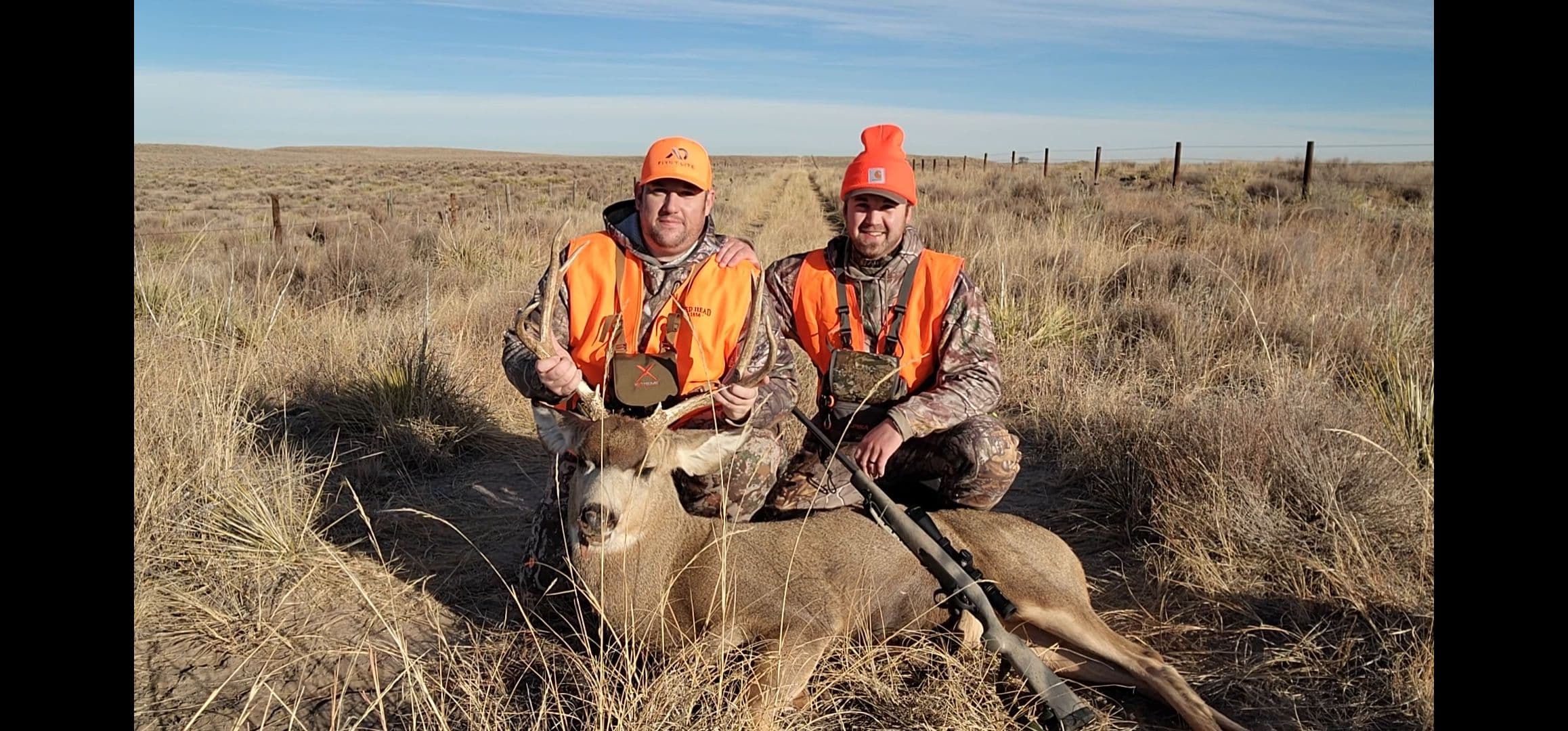
Weatherby Magnums
Roy Weatherby made his name on speed, and cartridges like the .270 Wby Mag and .300 Wby Mag remain as fast and flat as ever. They demand long barrels and careful shot placement but deliver impressive performance in the wide-open West.
.300 WSM
The .300 Winchester Short Magnum packs near-.300 Win Mag performance into a short-action rifle. For hunters who like compact rifles but want magnum-level energy, it’s an excellent option.
.270 WSM
Think of it as the .270 Winchester on steroids. It shoots flatter and hits harder, making it a superb mule deer and pronghorn round that doubles as an elk cartridge with premium bullets.
7mm SAUM
A cartridge that never quite went mainstream but is beloved among reloaders for its efficiency and long-range ballistics. In the right rifle, it’s an outstanding mule deer and elk round.
.300 RUM
The Remington Ultra Magnum is pure horsepower. It launches 200–220 grain bullets at blistering speeds, delivering massive energy at long range. The recoil is punishing, and barrel life is short—but if you want overkill on elk, moose, or bear, this is it.
Western Hunting Load Chart (By Cartridge × Species)
Bullet type key:
- Mono = all-copper (Barnes TTSX/LRX, Hornady CX)
- Bonded = Nosler AccuBond, Swift Scirocco II, Federal Terminal Ascent
- Partition/A-Frame = controlled dual-core (Nosler Partition), heavy bonded (Swift A-Frame)
- Cup-&-Core LR = high-BC but softer (Hornady ELD-X, Berger Hybrid Hunter)
General rule: For pronghorn/sheep/goat prioritize flat trajectory & BC; for deer moderate expansion; for black bear/elk/moose emphasize penetration (bonded/mono/heavy-for-caliber).
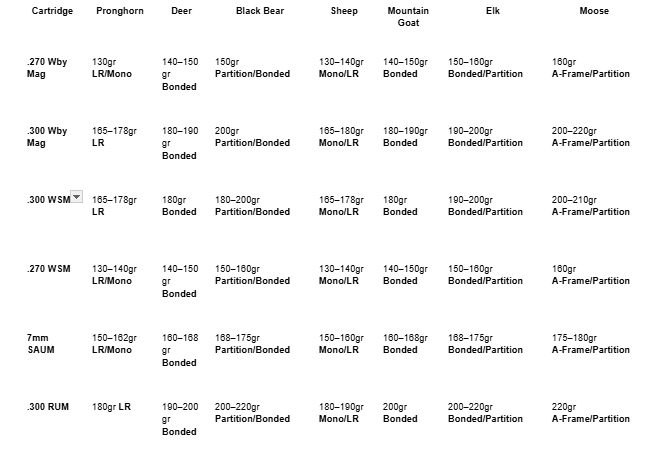
Conclusion
The West is a proving ground—not just for hunters, but for cartridges. From century-old classics like the .30-06 Springfield and .270 Winchester to cutting-edge precision performers like the 7mm PRC and .300 PRC, the landscape demands accuracy, power, and reliability.
No matter which western caliber you carry, success comes from knowing your rifle, choosing the right bullet, and practicing enough to shoot with confidence. Because when that bull elk steps out at last light or a ram pauses on a distant ridge, your cartridge becomes more than brass and powder—it becomes your link to one of hunting’s greatest traditions.